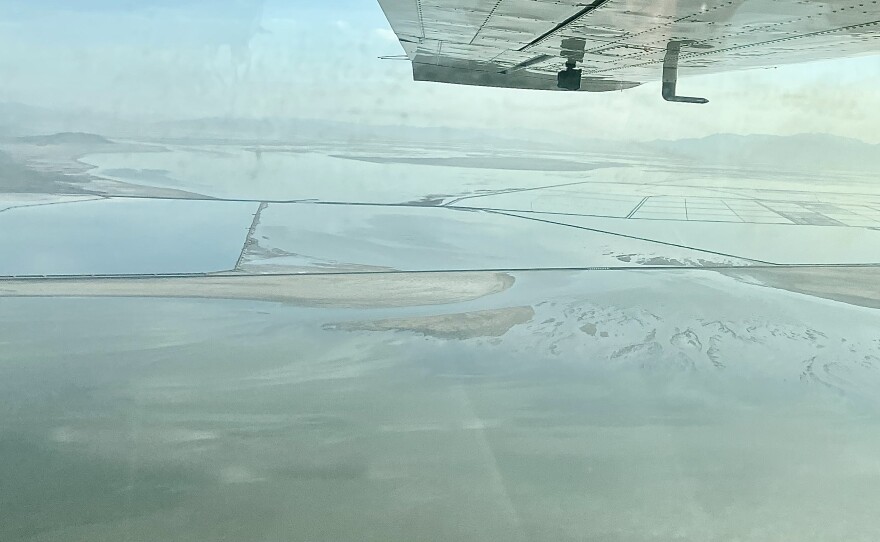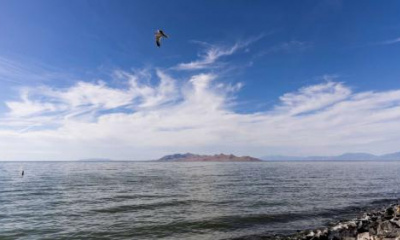Ecoflights is an Aspen, Colorado based nonprofit that provides a big picture perspective on changing landscapes across the West. They take scientists, activists, legislators, community members and press up in small planes to give aerial perspectives on important landscapes and ongoing conservation areas.
This year the group took Utah politicians, members of the Great Salt Lake Collaborative, and Great Salt Lake experts, among others, out to view Great Salt Lake from several thousand feet up in the sky.
Jaimi Butler, a Great Salt Lake scientist who has written several articles and books about the lake, could see the difference brought by this year’s runoff.
“Last year, and even the year before, we really weren't seeing any water coming out of the Bear River and entering into Great Salt Lake. It was a big, dry, open muddy plane,” said Butler.
Due to this year’s high precipitation, water can now be seen flowing from the lake’s largest tributary, the Bear River, and flooding the surrounding area. It could mean good news for Utah’s state crustacean.
The south arm’s salinity provides ideal conditions for a niche group of organisms, particularly brine shrimp which thrive in waters of 12-16% salinity. The last several years of extreme drought saw further concentration of salt in the waters.
“The highest it got was 19%. So, three percentage points higher than is optimal. And 3% is big — on average, the seawater that you taste when you go to the beach, that's 3.5% salinity,” said Butler.
The hope with this year’s runoff is that the south arm of the lake will decrease in salinity to around 14%.
While this year’s increase in runoff is incredibly important to the Great Salt Lake ecosystem and surrounding community, concerns about the future of the lake remain, as two decades of drought saw major disruption to the ecosystem. One season of good precipitation is not likely to repair all the damage.
Trevor Nielson is the Bear River Canal general manager.
“If you have a steady or decreasing supply, you can't be increasing your demand. I mean, the lake has to have some water in it. And so, we have to be smarter about it, we have to stretch it, what we’ve got further,” Nielsen said.
Read about last year’s ecoflight and see photos of this area last here.









